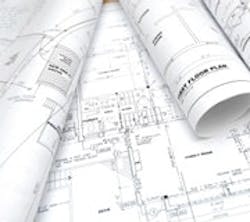Let's Interface About Interfaces
As I walked through a trade show recently, I paid special attention to the screen designs of the operator interfaces I encountered. I wasn’t impressed.
A few stood out, but most screens were an array of boxes and numbers for inputting or displaying data. Many of these machines were large, and their complexity would require significant training to operate effectively. In most cases, the operator interface contributed little to reduce this complexity and make machine operation more intuitive. Some manufacturers used color to differentiate areas on the screen; others employed an almost monochrome look, even though they had a color monitor. In one booth it appeared as if each machine’s HMI was designed by a different person who had no contact with any other controls engineer in the company. There was no continuity between any of the screens and one might even think the machines were built by different companies.
[pullquote]The challenges and difficulties that lead to poor screen design are understandable. Tight deadlines, last-minute program modifications and budget constraints all lead to compromises in the design. Customers often accept these compromises because they don’t realize it can be better. Poor screen design is prevalent in custom equipment, but the same issues impact standard equipment screen design. When the time comes to update or redesign, an opportunity arises to make the design more intuitive and user-friendly. However, even if adequate time and energy is invested in an operator interface for a next-generation product, the tendency is to follow the format of the previous machine. After all, that format worked sufficiently well for the previous generation and everyone in the company understands how it works.
As controls engineers, we need to look at ourselves as designers as well as engineers. Anybody can put a numeric entry field on a screen to edit the value of a newly created timer. However, it takes planning and creativity to put that timer value on a screen where the operator expects to find it and can understand its effect on the process.
Screen design can be improved in a number of ways. One is to hire a design firm to evaluate your current design and create something new. This can be costly but will yield some fresh ideas. It’s also challenging because it’s difficult to convey all the details of the machine control to the designer. The greatest benefit will come from explaining your product to another designer and being forced to think about the control screens in a new way.
A less-costly idea might be to take some cues from the Internet or consumer electronics. Everyone has visited clean, well-designed websites and poor, disorganized websites. I see both extremes in the vendor sites that I regularly use to find product information or download software. Study the good sites, and think about what makes them easy to navigate and why the information is always right where you‘d expect to find it.
Phones and GPSs are good examples, too. Most cell-phone users can pick up any phone and know how to use it without reading the user manual. The cell phone menu format is common to us, and we recognize icons that represent different functions. The same menus and icons can be applied to industrial machinery. If a machine control screen looks and functions similarly to an iPhone application or a Garmin GPS that the operator already has used, then that person will have an easier time understanding the machine controls.
I’ve applied what I’ve learned from these methods to our products at Extol. We’ve received positive feedback from our customers regarding the ease of use of the HMI on our Rapid Conductor hot plate welder and Vortex spin welder. Our next-generation InfraStake controller will be released soon and the screen design has received significant attention. I am excited to see the reaction to this product when it hits the market.
As you begin to apply industrial design to HMI screen design, you will be bothered by things that you never noticed before, and the changes that result will make the HMI easy to use and understand. Suddenly the HMI will become more than just a box for data entry but a way for operators to easily understand and control their machines.
Rob Bouws is a product development engineer at Extol (www.extolinc.com), a designer and builder of custom assembly equipment and automated systems in Zeeland, Mich.


